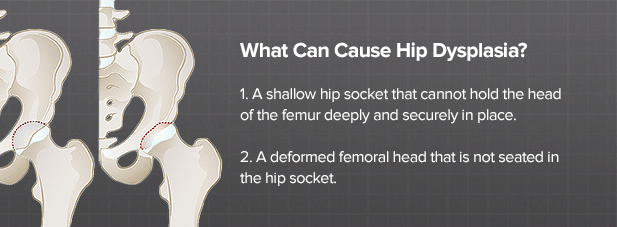
Hip dysplasia, also known as Developmental Dysplasia of the Hip (DDH), is the medical term for instability, or looseness, of the hip joint. Typically, there are two abnormal changes in hip anatomy leading to a dysplastic hip:
These mismatched bones eventually begin to wear on each other. As a result of this wear, the joint continually attempts to repair itself by producing new cartilage and, therefore, the joint may suffer degradation due to the abnormal wearing or may not be able to support the person’s body weight and become mechanically unstable, causing hip joint pain. The ligaments of the hip joint may also become loose or stretched. When the femoral head comes completely out of the socket it is called a dislocation.
This altered hip anatomy may also result in:
Patients can have different severities of dysplasia ranging from a completely dislocated hip to a hip that is only slightly out of line and might only give symptoms later on in life.
Learn basics of hip anatomy »
Explore potential treatment options for hip dysplasia »